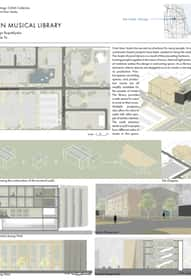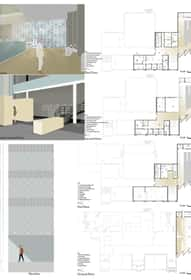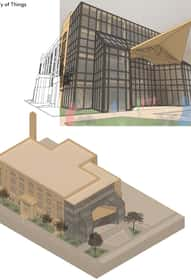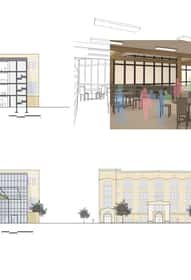B.ARCH Third Year Studio Fall
- Saeah Yu |
- Sofia Wu |
- Stephanie Hernandez
ARCH 305 ARCHITECTURE STUDIO V : Fieldhouse Without a Field
Chicago is the birthplace of the field house, an indoor facility that extends the seasonal use of public parks. The fieldhouse was originally conceived of as a community center that supported the health and well-being of city dwellers. Early public parks were associated with respite from urban density, filth and pollution by providing green space and healthy recreational reprieve. The Chicago Park District currently operates over 1200 parks and 240 field houses all free and open to the public. The park district reinforces a lively mix of community interests from play and wellness to arts, culture and public engagement. It serves citizens of all ages and abilities by providing space for inclusion and organized seasonal programming.
While 99.6% of city residents live within ½ mile of a public park, not all parks are equal. The fieldhouse without a field will look at the possibility of considering fieldhouses that are located throughout the city as a means of extending the reach of the park districts programming without necessarily being connected to a green space. These fieldhouses serve as community centers of recreation and well-being providing spaces dedicated to sports, play and wellness and/or arts and culture. The fieldhouses will include access to the outdoors and a seasonal operability that connects environmental conditioning with the variable weather of Chicago. A variety of focuses and urban contexts will provide a modicum of specialized facilities directed toward a community of users that may be neighborhood or city-wide. These fieldhouses without fields will serve as new anchors in communities that may be lacking in development opportunities.
Section 1 Wetzel | Section 2 Dewane | Section 3 Long | Section 4 Mattheis | Section 5 Robertson | Section 6 Yu
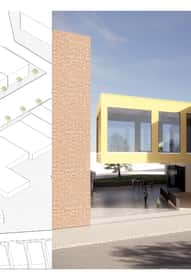
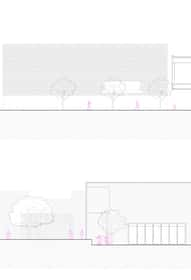
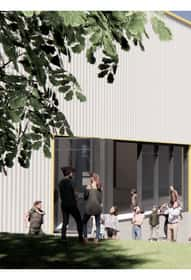
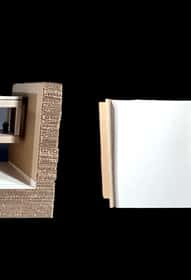
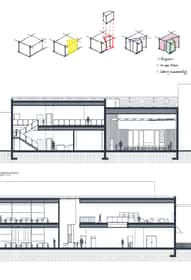
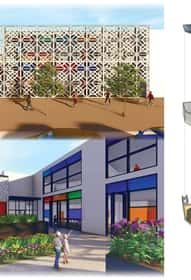
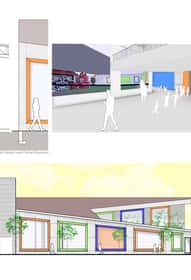
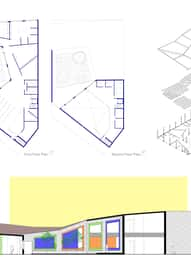
- Elle Dils |
- Helen Leach |
- Zachary Clark
ARCH 305 ARCHITECTURE STUDIO V : Fieldhouse Without a Field
Chicago is the birthplace of the field house, an indoor facility that extends the seasonal use of public parks. The fieldhouse was originally conceived of as a community center that supported the health and well-being of city dwellers. Early public parks were associated with respite from urban density, filth and pollution by providing green space and healthy recreational reprieve. The Chicago Park District currently operates over 1200 parks and 240 field houses all free and open to the public. The park district reinforces a lively mix of community interests from play and wellness to arts, culture, and public engagement. It serves citizens of all ages and abilities by providing space for inclusion and organized seasonal programming.
While 99.6% of city residents live within ½ mile of a public park, not all parks are equal. The fieldhouse without a field will look at the possibility of considering fieldhouses that are located throughout the city as a means of extending the reach of the park districts programming without necessarily being connected to a green space. These fieldhouses serve as community centers of recreation and well-being providing spaces dedicated to sports, play and wellness and/or arts and culture. The fieldhouses will include access to the outdoors and a seasonal operability that connects environmental conditioning with the variable weather of Chicago. A variety of focuses and urban contexts will provide a modicum of specialized facilities directed toward a community of users that may be neighborhood or city-wide. These fieldhouses without fields will serve as new anchors in communities that may be lacking in development opportunities.
Section 1 Wetzel | Section 2 Dewane | Section 3 Long | Section 4 Mattheis | Section 5 Robertson | Section 6 Yu
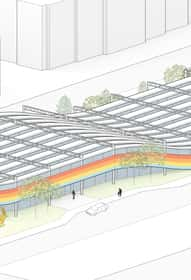
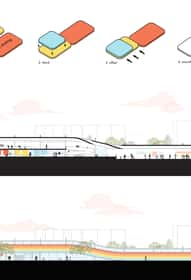
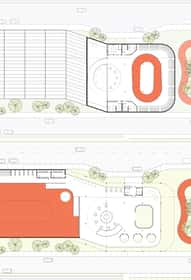
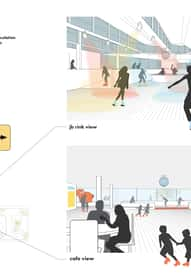
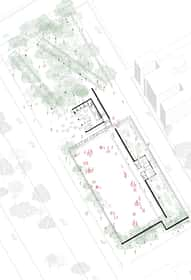
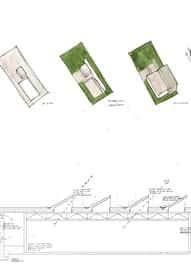
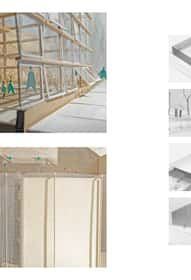
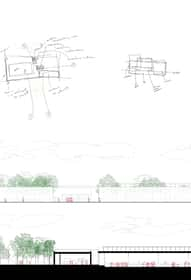
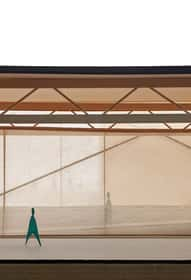
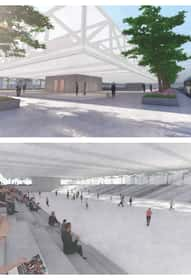
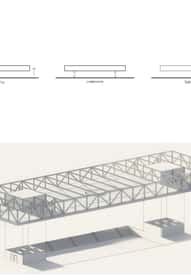
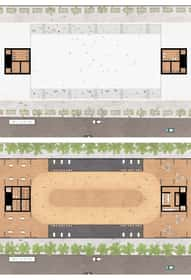
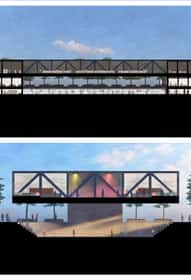
- Daniel Palka |
- Jonah Laduca |
- Jusang Lee |
- Samuel Kastan
ARCH 305 ARCHITECTURE STUDIO V : Fieldhouse Without a Field
Chicago is the birthplace of the field house, an indoor facility that extends the seasonal use of public parks. The fieldhouse was originally conceived of as a community center that supported the health and well-being of city dwellers. Early public parks were associated with respite from urban density, filth and pollution by providing green space and healthy recreational reprieve. The Chicago Park District currently operates over 1200 parks and 240 field houses all free and open to the public. The park district reinforces a lively mix of community interests from play and wellness to arts, culture, and public engagement. It serves citizens of all ages and abilities by providing space for inclusion and organized seasonal programming.
While 99.6% of city residents live within ½ mile of a public park, not all parks are equal. The fieldhouse without a field will look at the possibility of considering fieldhouses that are located throughout the city as a means of extending the reach of the park districts programming without necessarily being connected to a green space. These fieldhouses serve as community centers of recreation and well-being providing spaces dedicated to sports, play and wellness and/or arts and culture. The fieldhouses will include access to the outdoors and a seasonal operability that connects environmental conditioning with the variable weather of Chicago. A variety of focuses and urban contexts will provide a modicum of specialized facilities directed toward a community of users that may be neighborhood or city-wide. These fieldhouses without fields will serve as new anchors in communities that may be lacking in development opportunities.
Section 1 Wetzel | Section 2 Dewane | Section 3 Long | Section 4 Mattheis | Section 5 Robertson | Section 6 Yu
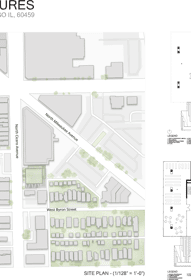
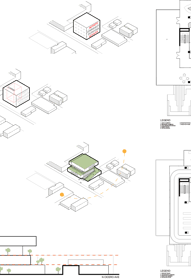
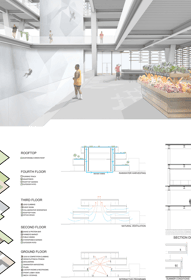
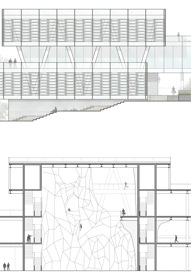
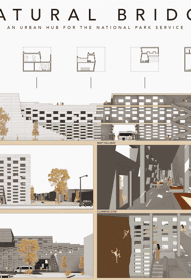
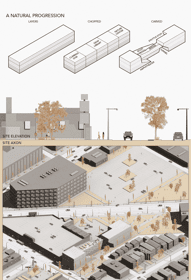
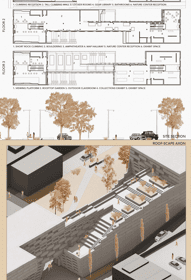
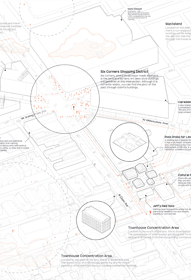
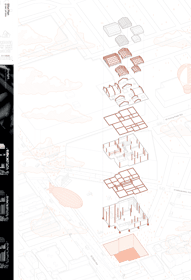
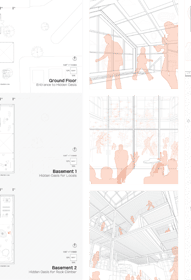
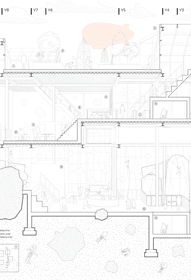
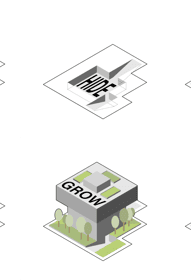
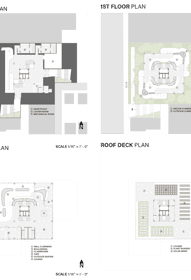
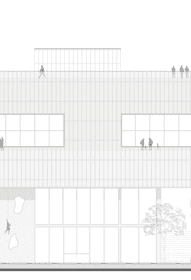
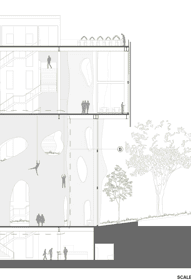
- Theint Shwe Yee Lin |
- Carolina Gonzales |
- Kiara Yahya |
- Tianjiao Wang |
- Gerardo Lopez Wang
ARCH 305 ARCHITECTURE STUDIO V : Fieldhouse Without a Field
Chicago is the birthplace of the field house, an indoor facility that extends the seasonal use of public parks. The fieldhouse was originally conceived of as a community center that supported the health and well-being of city dwellers. Early public parks were associated with respite from urban density, filth and pollution by providing green space and healthy recreational reprieve. The Chicago Park District currently operates over 1200 parks and 240 field houses all free and open to the public. The park district reinforces a lively mix of community interests from play and wellness to arts, culture, and public engagement. It serves citizens of all ages and abilities by providing space for inclusion and organized seasonal programming.
While 99.6% of city residents live within ½ mile of a public park, not all parks are equal. The fieldhouse without a field will look at the possibility of considering fieldhouses that are located throughout the city as a means of extending the reach of the park districts programming without necessarily being connected to a green space. These fieldhouses serve as community centers of recreation and well-being providing spaces dedicated to sports, play and wellness and/or arts and culture. The fieldhouses will include access to the outdoors and a seasonal operability that connects environmental conditioning with the variable weather of Chicago. A variety of focuses and urban contexts will provide a modicum of specialized facilities directed toward a community of users that may be neighborhood or city-wide. These fieldhouses without fields will serve as new anchors in communities that may be lacking in development opportunities.
Section 1 Wetzel | Section 2 Dewane | Section 3 Long | Section 4 Mattheis | Section 5 Robertson | Section 6 Yu
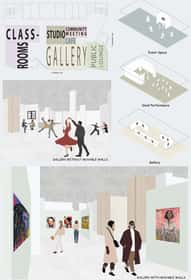
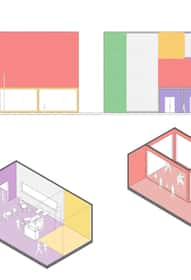
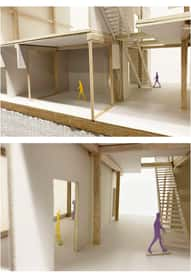
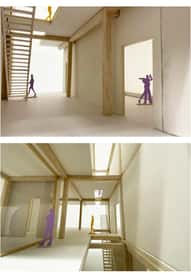
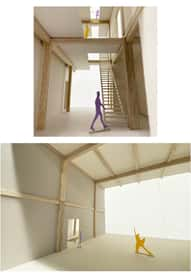
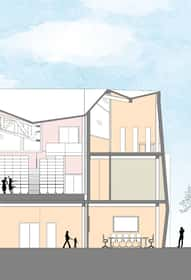
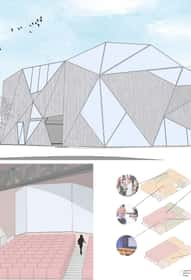
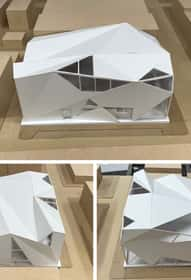
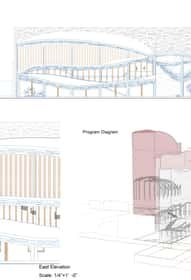
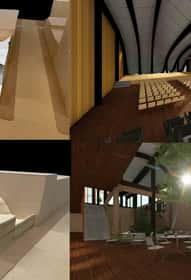
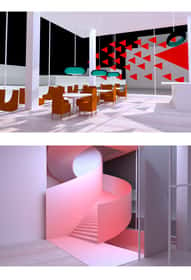
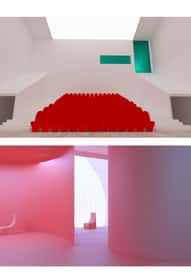
- Daria Dewolf |
- Samuel Larsen |
- Matteo Calafiura Soleri
ARCH 305 ARCHITECTURE STUDIO V : Fieldhouse Without a Field
Chicago is the birthplace of the field house, an indoor facility that extends the seasonal use of public parks. The fieldhouse was originally conceived of as a community center that supported the health and well-being of city dwellers. Early public parks were associated with respite from urban density, filth and pollution by providing green space and healthy recreational reprieve. The Chicago Park District currently operates over 1200 parks and 240 field houses all free and open to the public. The park district reinforces a lively mix of community interests from play and wellness to arts, culture, and public engagement. It serves citizens of all ages and abilities by providing space for inclusion and organized seasonal programming.
While 99.6% of city residents live within ½ mile of a public park, not all parks are equal. The fieldhouse without a field will look at the possibility of considering fieldhouses that are located throughout the city as a means of extending the reach of the park districts programming without necessarily being connected to a green space. These fieldhouses serve as community centers of recreation and well-being providing spaces dedicated to sports, play and wellness and/or arts and culture. The fieldhouses will include access to the outdoors and a seasonal operability that connects environmental conditioning with the variable weather of Chicago. A variety of focuses and urban contexts will provide a modicum of specialized facilities directed toward a community of users that may be neighborhood or city-wide. These fieldhouses without fields will serve as new anchors in communities that may be lacking in development opportunities.
Section 1 Wetzel | Section 2 Dewane | Section 3 Long | Section 4 Mattheis | Section 5 Robertson | Section 6 Yu
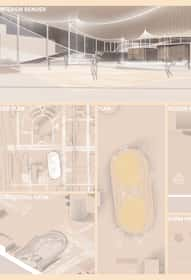
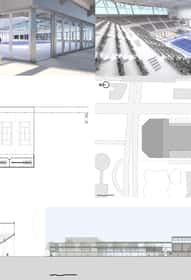
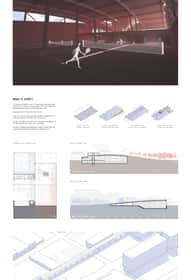
- Jonathon Dixon |
- Katarzyna Wodzisz |
- Galilea Ines |
- Ahishek Chaudhari
ARCH 305 ARCHITECTURE STUDIO V : Fieldhouse Without a Field
Chicago is the birthplace of the field house, an indoor facility that extends the seasonal use of public parks. The fieldhouse was originally conceived of as a community center that supported the health and well-being of city dwellers. Early public parks were associated with respite from urban density, filth and pollution by providing green space and healthy recreational reprieve. The Chicago Park District currently operates over 1200 parks and 240 field houses all free and open to the public. The park district reinforces a lively mix of community interests from play and wellness to arts, culture, and public engagement. It serves citizens of all ages and abilities by providing space for inclusion and organized seasonal programming.
While 99.6% of city residents live within ½ mile of a public park, not all parks are equal. The fieldhouse without a field will look at the possibility of considering fieldhouses that are located throughout the city as a means of extending the reach of the park districts programming without necessarily being connected to a green space. These fieldhouses serve as community centers of recreation and well-being providing spaces dedicated to sports, play and wellness and/or arts and culture. The fieldhouses will include access to the outdoors and a seasonal operability that connects environmental conditioning with the variable weather of Chicago. A variety of focuses and urban contexts will provide a modicum of specialized facilities directed toward a community of users that may be neighborhood or city-wide. These fieldhouses without fields will serve as new anchors in communities that may be lacking in development opportunities.
Section 1 Wetzel | Section 2 Dewane | Section 3 Long | Section 4 Mattheis | Section 5 Robertson | Section 6 Yu
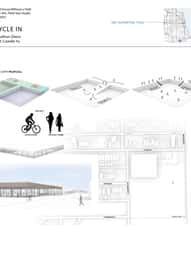
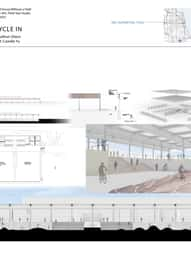
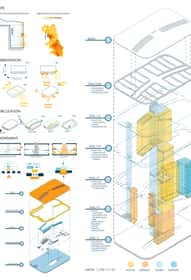
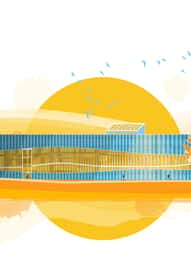
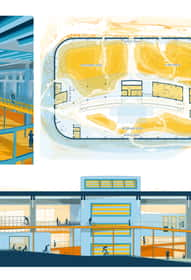
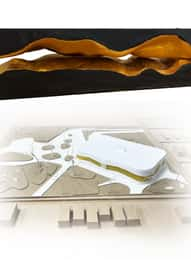
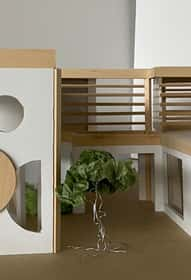
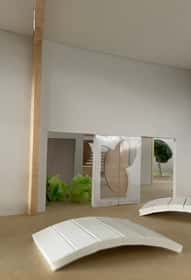


B.ARCH Third Year Studio Spring
- Helen Leach
ARCH 306 ARCHITECTURE STUDIO VI : Library of Things - Shared Ecologies, Shared Economies
On six adaptive reuse sites throughout the city, concerns for cultural, environmental and economic responsiveness will contribute to the design of a public lending institution. The project will be conceived through the public library system as a place of community lending. As a taxpayer repository of resources, the Chicago Public Library’s mission statement projects a connection to lifelong learning, information, ideas and knowledge. Throughout the years, the public library has included programming and other resources as a method of reaching beyond books and literacy to broaden their mission and address local initiatives.
Exploring the concept of shared economies and shared ecologies at the scale of the community and the city, the program will expand the offerings of the public library to include a broader base collection of things that are opportune for lending, circulating, reuse. With an aim of reducing the cost and collection of stuff an individual or community may use on a limited basis, these adaptive reuse libraries will support the mission of the Chicago Public Library by providing lending opportunities and programming for all Chicago residents to access intuitive art, cosplay costumes, tools, clothing, musical instruments, seeds, and party accessories. Each of these new lending libraries will include a micro-library of 1000 books that support literacy and learning as well. The library program will be re-imagined to support the specialized collections on hand and provide spaces for its utilization and community needs. The reimagined Library of Things will serve as prototypes of community resource centers that hybridize hands-on learning and reading with the lending of things and books.
Section 1 Wetzel | Section 2 Fredrickson | Section 3 Long | Section 4 Pritchett | Section 5 Robertson | Section 6 Sagbohan | Section 7 Yu
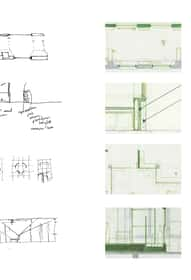
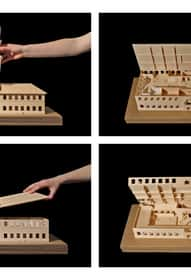
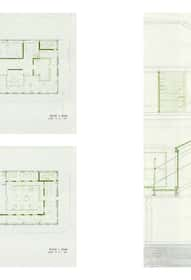
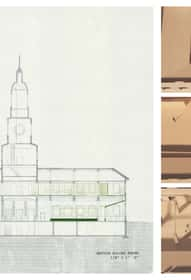
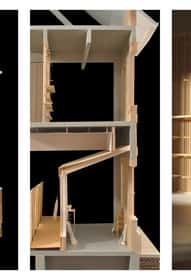
- Jayhawk Reese Julien |
- Jonah Laduca
ARCH 306 ARCHITECTURE STUDIO VI : Library of Things - Shared Ecologies, Shared Economies
On six adaptive reuse sites throughout the city, concerns for cultural, environmental and economic responsiveness will contribute to the design of a public lending institution. The project will be conceived through the public library system as a place of community lending. As a taxpayer repository of resources, the Chicago Public Library’s mission statement projects a connection to lifelong learning, information, ideas and knowledge. Throughout the years, the public library has included programming and other resources as a method of reaching beyond books and literacy to broaden their mission and address local initiatives.
Exploring the concept of shared economies and shared ecologies at the scale of the community and the city, the program will expand the offerings of the public library to include a broader base collection of things that are opportune for lending, circulating, reuse. With an aim of reducing the cost and collection of stuff an individual or community may use on a limited basis, these adaptive reuse libraries will support the mission of the Chicago Public Library by providing lending opportunities and programming for all Chicago residents to access intuitive art, cosplay costumes, tools, clothing, musical instruments, seeds, and party accessories. Each of these new lending libraries will include a micro-library of 1000 books that support literacy and learning as well. The library program will be re-imagined to support the specialized collections on hand and provide spaces for its utilization and community needs. The reimagined Library of Things will serve as prototypes of community resource centers that hybridize hands-on learning and reading with the lending of things and books.
Section 1 Wetzel | Section 2 Fredrickson | Section 3 Long | Section 4 Pritchett | Section 5 Robertson | Section 6 Sagbohan | Section 7 Yu
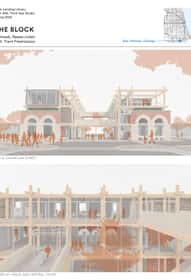
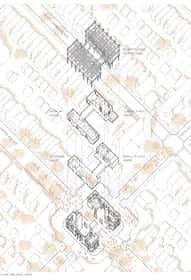
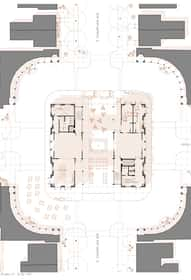
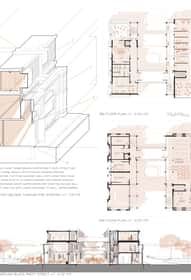
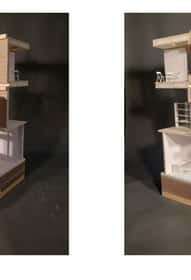
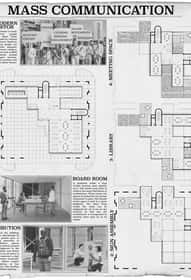
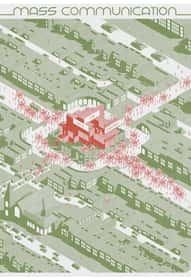
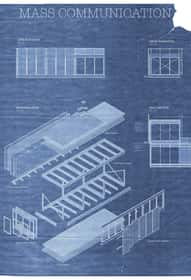
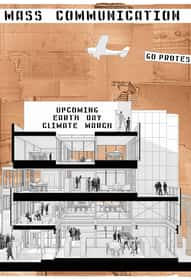
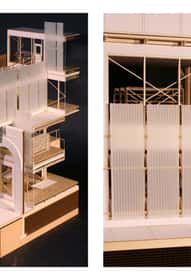
- Carolina Gonzales |
- Mistika Jimenez |
- Riya Poojari |
- Tianjiao Wang |
- Yesi Villa
ARCH 306 ARCHITECTURE STUDIO VI : Library of Things - Shared Ecologies, Shared Economies
On six adaptive reuse sites throughout the city, concerns for cultural, environmental and economic responsiveness will contribute to the design of a public lending institution. The project will be conceived through the public library system as a place of community lending. As a taxpayer repository of resources, the Chicago Public Library’s mission statement projects a connection to lifelong learning, information, ideas and knowledge. Throughout the years, the public library has included programming and other resources as a method of reaching beyond books and literacy to broaden their mission and address local initiatives.
Exploring the concept of shared economies and shared ecologies at the scale of the community and the city, the program will expand the offerings of the public library to include a broader base collection of things that are opportune for lending, circulating, reuse. With an aim of reducing the cost and collection of stuff an individual or community may use on a limited basis, these adaptive reuse libraries will support the mission of the Chicago Public Library by providing lending opportunities and programming for all Chicago residents to access intuitive art, cosplay costumes, tools, clothing, musical instruments, seeds, and party accessories. Each of these new lending libraries will include a micro-library of 1000 books that support literacy and learning as well. The library program will be re-imagined to support the specialized collections on hand and provide spaces for its utilization and community needs. The reimagined Library of Things will serve as prototypes of community resource centers that hybridize hands-on learning and reading with the lending of things and books.
Section 1 Wetzel | Section 2 Fredrickson | Section 3 Long | Section 4 Pritchett | Section 5 Robertson | Section 6 Sagbohan | Section 7 Yu
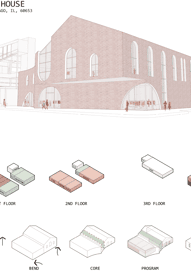
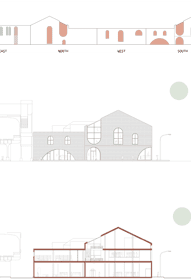
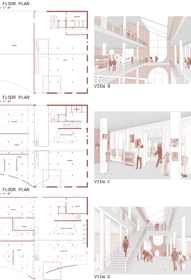
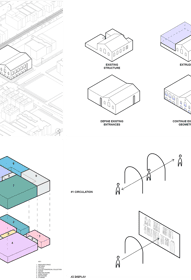
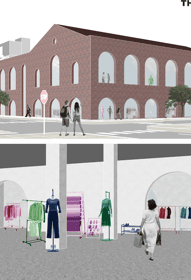
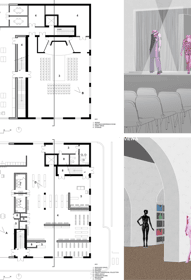
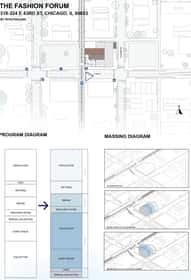
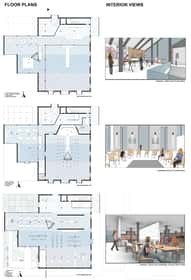
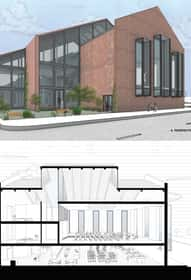
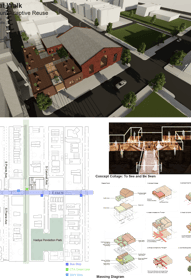
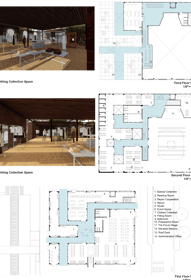
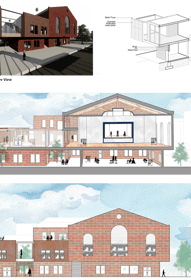
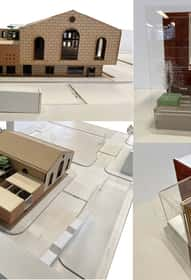
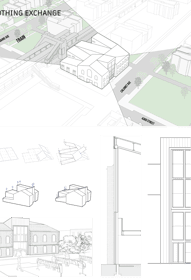
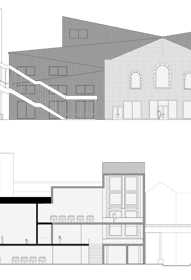
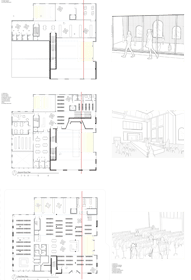
- Abhimata Nursilo
ARCH 306 ARCHITECTURE STUDIO VI : Library of Things - Shared Ecologies, Shared Economies
On six adaptive reuse sites throughout the city, concerns for cultural, environmental and economic responsiveness will contribute to the design of a public lending institution. The project will be conceived through the public library system as a place of community lending. As a taxpayer repository of resources, the Chicago Public Library’s mission statement projects a connection to lifelong learning, information, ideas and knowledge. Throughout the years, the public library has included programming and other resources as a method of reaching beyond books and literacy to broaden their mission and address local initiatives.
Exploring the concept of shared economies and shared ecologies at the scale of the community and the city, the program will expand the offerings of the public library to include a broader base collection of things that are opportune for lending, circulating, reuse. With an aim of reducing the cost and collection of stuff an individual or community may use on a limited basis, these adaptive reuse libraries will support the mission of the Chicago Public Library by providing lending opportunities and programming for all Chicago residents to access intuitive art, cosplay costumes, tools, clothing, musical instruments, seeds, and party accessories. Each of these new lending libraries will include a micro-library of 1000 books that support literacy and learning as well. The library program will be re-imagined to support the specialized collections on hand and provide spaces for its utilization and community needs. The reimagined Library of Things will serve as prototypes of community resource centers that hybridize hands-on learning and reading with the lending of things and books.
Section 1 Wetzel | Section 2 Fredrickson | Section 3 Long | Section 4 Pritchett | Section 5 Robertson | Section 6 Sagbohan | Section 7 Yu

- Elle Dils |
- Katarzyna Wodzisz
ARCH 306 ARCHITECTURE STUDIO VI : Library of Things - Shared Ecologies, Shared Economies
On six adaptive reuse sites throughout the city, concerns for cultural, environmental and economic responsiveness will contribute to the design of a public lending institution. The project will be conceived through the public library system as a place of community lending. As a taxpayer repository of resources, the Chicago Public Library’s mission statement projects a connection to lifelong learning, information, ideas and knowledge. Throughout the years, the public library has included programming and other resources as a method of reaching beyond books and literacy to broaden their mission and address local initiatives.
Exploring the concept of shared economies and shared ecologies at the scale of the community and the city, the program will expand the offerings of the public library to include a broader base collection of things that are opportune for lending, circulating, reuse. With an aim of reducing the cost and collection of stuff an individual or community may use on a limited basis, these adaptive reuse libraries will support the mission of the Chicago Public Library by providing lending opportunities and programming for all Chicago residents to access intuitive art, cosplay costumes, tools, clothing, musical instruments, seeds, and party accessories. Each of these new lending libraries will include a micro-library of 1000 books that support literacy and learning as well. The library program will be re-imagined to support the specialized collections on hand and provide spaces for its utilization and community needs. The reimagined Library of Things will serve as prototypes of community resource centers that hybridize hands-on learning and reading with the lending of things and books.
Section 1 Wetzel | Section 2 Fredrickson | Section 3 Long | Section 4 Pritchett | Section 5 Robertson | Section 6 Sagbohan | Section 7 Yu
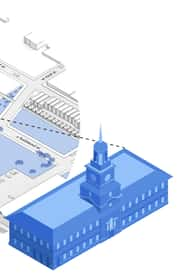
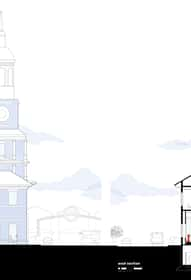
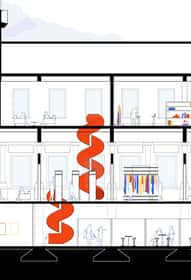
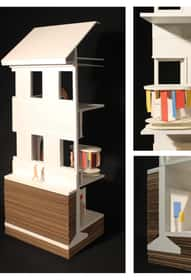

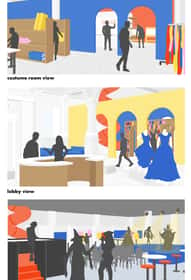
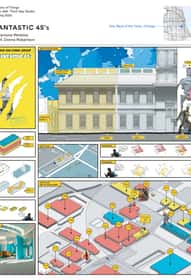
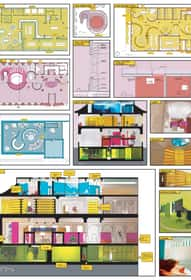
- Hayley Robbins |
- Matteo Calafiura Soleri |
- Ekaterina Bystrova |
- Jusang Lee
ARCH 306 ARCHITECTURE STUDIO VI : Library of Things - Shared Ecologies, Shared Economies
On six adaptive reuse sites throughout the city, concerns for cultural, environmental and economic responsiveness will contribute to the design of a public lending institution. The project will be conceived through the public library system as a place of community lending. As a taxpayer repository of resources, the Chicago Public Library’s mission statement projects a connection to lifelong learning, information, ideas and knowledge. Throughout the years, the public library has included programming and other resources as a method of reaching beyond books and literacy to broaden their mission and address local initiatives.
Exploring the concept of shared economies and shared ecologies at the scale of the community and the city, the program will expand the offerings of the public library to include a broader base collection of things that are opportune for lending, circulating, reuse. With an aim of reducing the cost and collection of stuff an individual or community may use on a limited basis, these adaptive reuse libraries will support the mission of the Chicago Public Library by providing lending opportunities and programming for all Chicago residents to access intuitive art, cosplay costumes, tools, clothing, musical instruments, seeds, and party accessories. Each of these new lending libraries will include a micro-library of 1000 books that support literacy and learning as well. The library program will be re-imagined to support the specialized collections on hand and provide spaces for its utilization and community needs. The reimagined Library of Things will serve as prototypes of community resource centers that hybridize hands-on learning and reading with the lending of things and books.
Section 1 Wetzel | Section 2 Fredrickson | Section 3 Long | Section 4 Pritchett | Section 5 Robertson | Section 6 Sagbohan | Section 7 Yu
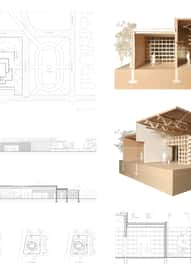
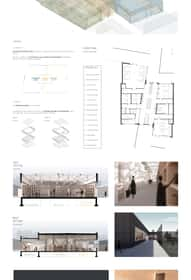
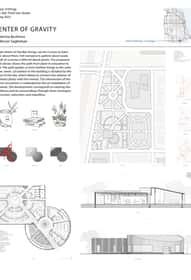
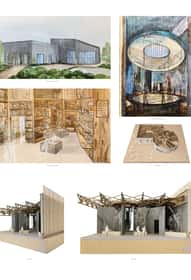
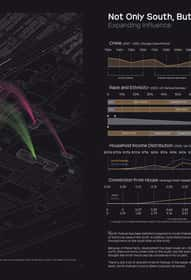
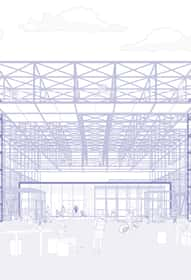
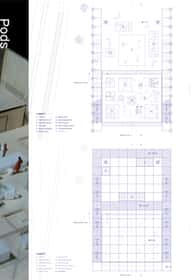
- Ikupakyala Mwakalinga |
- Tyler Zediker |
- Kylee Hennes
ARCH 306 ARCHITECTURE STUDIO VI : Library of Things - Shared Ecologies, Shared Economies
On six adaptive reuse sites throughout the city, concerns for cultural, environmental and economic responsiveness will contribute to the design of a public lending institution. The project will be conceived through the public library system as a place of community lending. As a taxpayer repository of resources, the Chicago Public Library’s mission statement projects a connection to lifelong learning, information, ideas and knowledge. Throughout the years, the public library has included programming and other resources as a method of reaching beyond books and literacy to broaden their mission and address local initiatives.
Exploring the concept of shared economies and shared ecologies at the scale of the community and the city, the program will expand the offerings of the public library to include a broader base collection of things that are opportune for lending, circulating, reuse. With an aim of reducing the cost and collection of stuff an individual or community may use on a limited basis, these adaptive reuse libraries will support the mission of the Chicago Public Library by providing lending opportunities and programming for all Chicago residents to access intuitive art, cosplay costumes, tools, clothing, musical instruments, seeds, and party accessories. Each of these new lending libraries will include a micro-library of 1000 books that support literacy and learning as well. The library program will be re-imagined to support the specialized collections on hand and provide spaces for its utilization and community needs. The reimagined Library of Things will serve as prototypes of community resource centers that hybridize hands-on learning and reading with the lending of things and books.
Section 1 Wetzel | Section 2 Fredrickson | Section 3 Long | Section 4 Pritchett | Section 5 Robertson | Section 6 Sagbohan | Section 7 Yu
